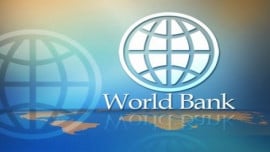
KARACHI: Pakistan stands at number 27 with respect to purchasing power and 45 with respect to dollar terms on the globe.
The country’s economy has performed well despite many obstacles like corruption, regional conflicts, inflation, sectarian issues, terrorism and natural calamities. We can claim it is resilient but in all truth it is neither quite well nor consistent.
To answer this we must have an idea about economic growth. Simply put, economic growth means a process by which the wealth of a particular nation increases over a particular span of time.
However, we can trace its most precise definition from Islamic history back in 1377. The Arabian economist and thinker Ibn Khaldun provided one of the earliest compendious descriptions of economic growth in his book Muqqadima: “When population increases, the available labour increases further. In turn, luxury again increases in correspondence with the increasing profit, and the customs and needs of luxury increase. Crafts are created to obtain luxury products. The value realised from them also increases, as a result, profits are again multiplied in the town.
“Production is thriving even more than ever before. And it goes with second and third increase. All the labour serves luxury and wealth, in contrast to the original labour that served the necessity of life.”
Economic growth can be measured in many ways, in numerical terms, but the most prominent are real GDP as a whole and per capita GDP. Both serve the purpose well. Pakistan’s real GDP jumped from two per cent in 2000 to nine per cent in 2004 and then went as low at two per cent in 2009.
However, GDP per capita income posted a reasonable figure of $1,250 but keeping in view inflation in double digits, it was almost nothing.
Economists have identified factors that affect economic growth: there are six of them actually, but they can be easily grouped into three factors; supply, demand and efficiency factor.
In the supply factor the economy of a country grows with the increase in quality and quantity of natural resources, human resource, capital goods, and technology. These are the ingredients that have the ability to expand the economy physically.
Pakistan is a country rich in natural resources, as is acknowledged by the world. World renowned companies have issued a number of reports regarding the availability of oil, gas and gold in far flung areas of Balochistan, Sindh and southern Punjab.
We have not issued any licence to foreign companies for exploration of our natural resources even though they could provide some relief to us.
In former President Pervez Musharraf’s regime, a few licences were issued to foreign companies but the whole process was so controversial and biased that one could argue about the transparency and credibility of these bids.
In our search for foreign direct investment, we must not underestimate the value of these resources and should not sell them so cheap. Nowadays there is great cry for power shortage; which can be bridged by providing alternate energy resources, the best example of which is coal.
In Sindh a huge reserve of coal has been discovered in Thar; this can provide and generate cheap electricity for decades to come. Despite the Sindh provincial government announcing the budget for this project, the federal government has done nothing so far. There is no doubt about the sincerity of this political government because most of the issues are inherited from the previous government.
When we look back at Musharraf’s era, there we see that neighbouring countries being labelled Asian tigers was due to their robust economic growth which did a lot to fulfill their energy demands.
Most of the population is in its teens but we have nothing to improve their education and skills. In Punjab, the number of doctors and engineers that we are producing yearly are so few that they can be counted on one’s fingers.
We have not improved the standard of our schools, colleges and universities. We have not added a single college or university to the country through which we can better address the need of professionals.
In the 1990s, we started technical education for our youth but we have not prepared them for the international market, due to lack of academic as well national and international exposure.
During the rule of Nawaz Sharif our whole concern was the development of transportation infrastructure across Pakistan. To have world class roads, industrial parks, storage houses and many others facilities was not a bad idea as Pakistan’s geographical location is very important to the world.
Now coming to the second ingredients of demand side, the situation is not better and is the same as the previous one. The population growth rate of Pakistan is high when compared with European countries, enabling Pakistan to become one of the best markets for supply and services in Asia. The question is whether we have set aims and objectives to fulfill economic growth and targets.
Published in The Express Tribune, August 2nd, 2010.














































COMMENTS
Comments are moderated and generally will be posted if they are on-topic and not abusive.
For more information, please see our Comments FAQ